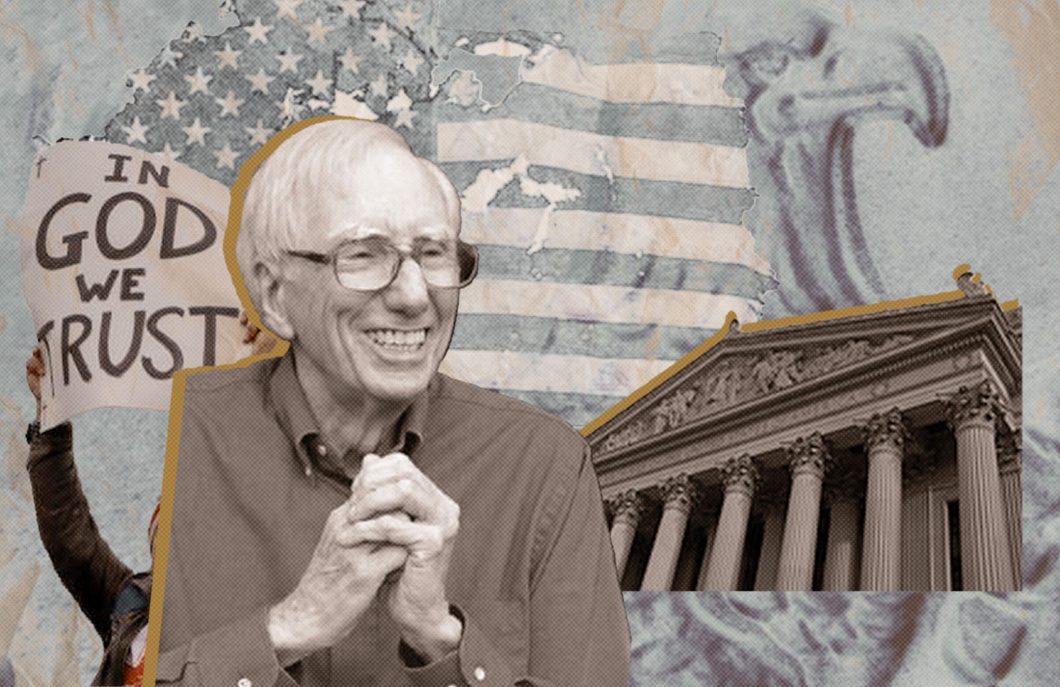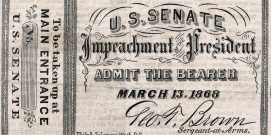Is Nationalism really a unique construction of Protestant theology as Yoram Hazony claims?
Perspective on the Almost-Chosen People
In his recent forum essay, Richard Gamble offers something of a cri-de-coeur for those who desire to reinvigorate an American civil religion (ACR) in a post-Christian culture riven by partisan divides. He expresses a healthy skepticism that such a project could ever be successful, pointing to the profound limitations of a civil religion in a nation without an established church. He is also skeptical that ACR could ever succeed at fostering a righteous unity in the nation without undermining Christian citizens’ primary loyalties, which are to God. ACR presents American Christians with an impossible choice, a choice “between the nation and their God.” Efforts at arguing for a Christian founding, particularly in the Faith and Liberty Bible, fall short for Gamble. A strong case can perhaps be made for the Bible’s singular influence on American ideals, but an argument for America as a biblical nation is a separate breed of cat altogether.
Gamble admits that he reluctantly picked up this topic, having hoped that ACR might have had its day in the sun. But the oceans of ink spilled on nationalism, exceptionalism, integralism, theonomy, and religion and politics have compelled him to consider ACR once again. I consider Gamble a friend, and I have admired his work for many years. I have even cited him in my research on exceptionalism and religious nationalism, so perhaps I owe him one for my part in putting him in the position in which he grudgingly finds himself.
Gamble’s lack of enthusiasm for ACR is understandable, and his skeptical approach to the entire civil-religious project is wise. His words of caution, based as they are in his deep reflections on American hypocrisies over the generations, should be taken seriously. Since the colonial foundings, Americans have frequently considered themselves chosen by God to fulfill a divine mission in the world. Chosenness and mission have been so central to American identity that one could teach a whole class on American history with this thematic combination as the sole frame of reference from 1607 to the present. Conflating the messianism of the Bible with that of American identity is nothing new, and will continue to be a perennial impulse for Americans, no matter their ideological stripe.
The name we may assign to the collection of problems with ACR could be “Legion,” to (in the best of American tradition) borrow from a biblical story. Proponents of ACR have appropriate theological themes from the Bible in every generation. A more general problem with ACR, however, is its malleability. One generation might call on the Declaration of Independence, that “American Scripture,” to advance the thesis of natural equality. Another generation might base their appeal for justice on the Lost Cause. Still another may find meaning in a Manichean conflict between good and evil. Since the Civil War, civil religious expressions have been both prophetic (calling the nation to righteousness) and priestly (affirming the nation as innocent). The malleability and flexibility of ACR, in our nation without an established church, is both a strength and a weakness. The inherent manipulability of ACR is also, as the kids say, not a bug but a feature.
Considering the malleability of ACR, we can either give up on the project altogether, or embrace it and seek to channel it as a strength supporting our national development. Because America is a nation founded upon transcendent ideals, it seems that we Americans do not have much choice. America may not be a biblically Christian nation, but it is a nation with a profound debt to the Bible and a nation with religious liberty at the core of its identity and heritage. These two inescapable facts make religion—and the Christian religion—central to how we think of ourselves, even in our age of religious pluralism and partisanship. We need civil religion now, more than ever. And we need to come to grips with the potential benefits that ACR has to offer, recognizing its inherent weaknesses and tendencies to idolatry. There is nothing in ACR that necessitates idolatry. But that does not mean we should not remain vigilant.
While Martin Luther King, Jr. and Jimmy Carter advanced a prophetic ACR, Ronald Reagan, and the Bushes constructed a priestly ACR that sought to exorcize the demons of American foreign policy failures since the 1970s.
ACR is a complex subject. Gamble points to the work of Robert Bellah in understanding ACR, and rightly so, because Bellah’s 1967 essay was the seminal piece at the time in explaining it and exploring its power. But in trying to come to grips with ACR, we have to recognize that a lot of water has passed under the bridge since Bellah constructed what he called his “golden birdcage.” (Bellah looked back on his profession years after 1967 and observed that while he wrote a career-making article and created a field of study, he regretted always being known as the “civil religion scholar”.) The interdisciplinary field of civil religion studies has both deepened and widened in the years since the Vietnam Era, and much of the scholarship helps us understand ACR’s pitfalls and potentialities. We should heed these more recent voices, and gain wisdom from them as we consider ACR today.
For example, Sanford Kessler, in his Tocqueville’s Civil Religion: American Christianity and the Prospects for Freedom (1993), observed that Tocqueville’s work on liberalism was constructive in the years of the Cold War, but after the Cold War ended, liberalism’s limits became more apparent. Those limits demonstrated a need for national unifying starting points for a culture that was bending under the weight of expanding secularization. Kessler argued that Christianity could provide a solid footing under which ACR could serve as a benchmark for national unity as well as a potent foil against secularization. While Kessler’s notion that religion was necessary for freedom was not uncontested, his thesis continues to be worth debating.
Arthur Remillard maintained that civil religion was much more complex than the monolithic construct that Bellah offered in his Southern Civil Religions: Imagining the Good Society in the Post-Reconstruction Era (2011). Rather than Bellah’s conception of a broad, integrated civil religion for the entire nation, Remillard argued that there were many civil religions, because political/religious identity was constructed by local communities. Looking to the deep South region after 1877, he found that while ideas about the good society were informed by universal ideas like justice and truth, white Protestants were not able to incorporate African Americans into that good society on a civil religious basis. Remillard’s work goes far in showing the limits of ACR.
Raymond Haberski contended in God and War: American Civil Religion Since 1945 (2012) that war, more than any other dynamic, served as the defining reference point for ACR since the end of World War II. The Cold War, Vietnam, and the War on Terror helped reinforce the idea that America was on the side of right, and that its enemies were representatives of cosmic evil. While ACR brought coherence and meaning to Americans under the threat of Communism, nuclear annihilation, and terrorism, it was also a justification for persecution and tyranny at home. Haberski also noted that even during the Cold War, many forms of ACR emerged. While Martin Luther King, Jr. and Jimmy Carter advanced a prophetic ACR, Ronald Reagan, and the Bushes constructed a priestly ACR that sought to exorcize the demons of American foreign policy failures since the 1970s.
And Peter Gardella’s book-length treatment of ACR, American Civil Religion: What Americans Hold Sacred (2014), used liberty, democracy, peace, and tolerance as the touchpoints for ACR. He argued that ACR should be taken seriously as a legitimate religion in its own right, and he considered its many expressions in “monuments, texts, and images” like the name “America,” the flag, the Liberty Bell, and Disney Parks. Gardella was indebted to Bellah, as was Haberski (who studied under Bellah), but both these authors extend and develop ACR beyond Bellah’s writings to situate it for twenty-first-century audiences.
All this goes to show that Gamble’s suspicions, while legitimate, go too far in neglecting the potential for good that ACR offers. Gamble’s criticism of ACR is interesting, in that he is dubious about the value of ACR in the same way as Remillard, but continues to see ACR through the lens that Bellah provided nearly sixty years ago, like Gardella. Gamble’s piece reflects the perennial struggle that American Christians have faced with regard to ACR. Though many of us are somewhat embarrassed by it, and would like to move on from it, we find ourselves stuck with it. Christians have always faced the tension between living in the world, and yet not being of the world. We have to be wise in separating the precious from the worthless in ACR, but we also understand that American Christians of the twenty-first century are not the first, and will not be the last, to bear this burden. Bear it we must, for the alternatives before us are too horrible to contemplate.



